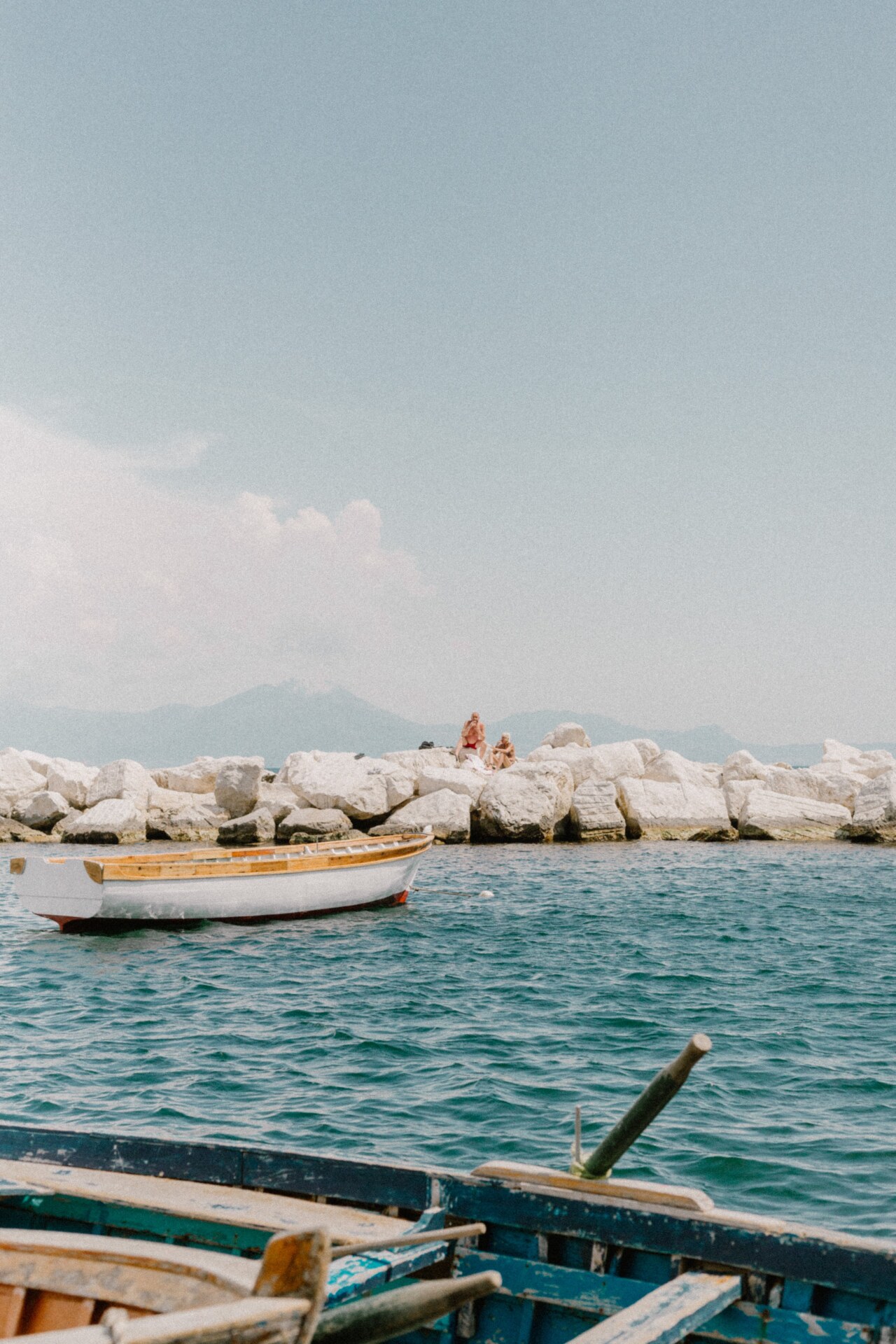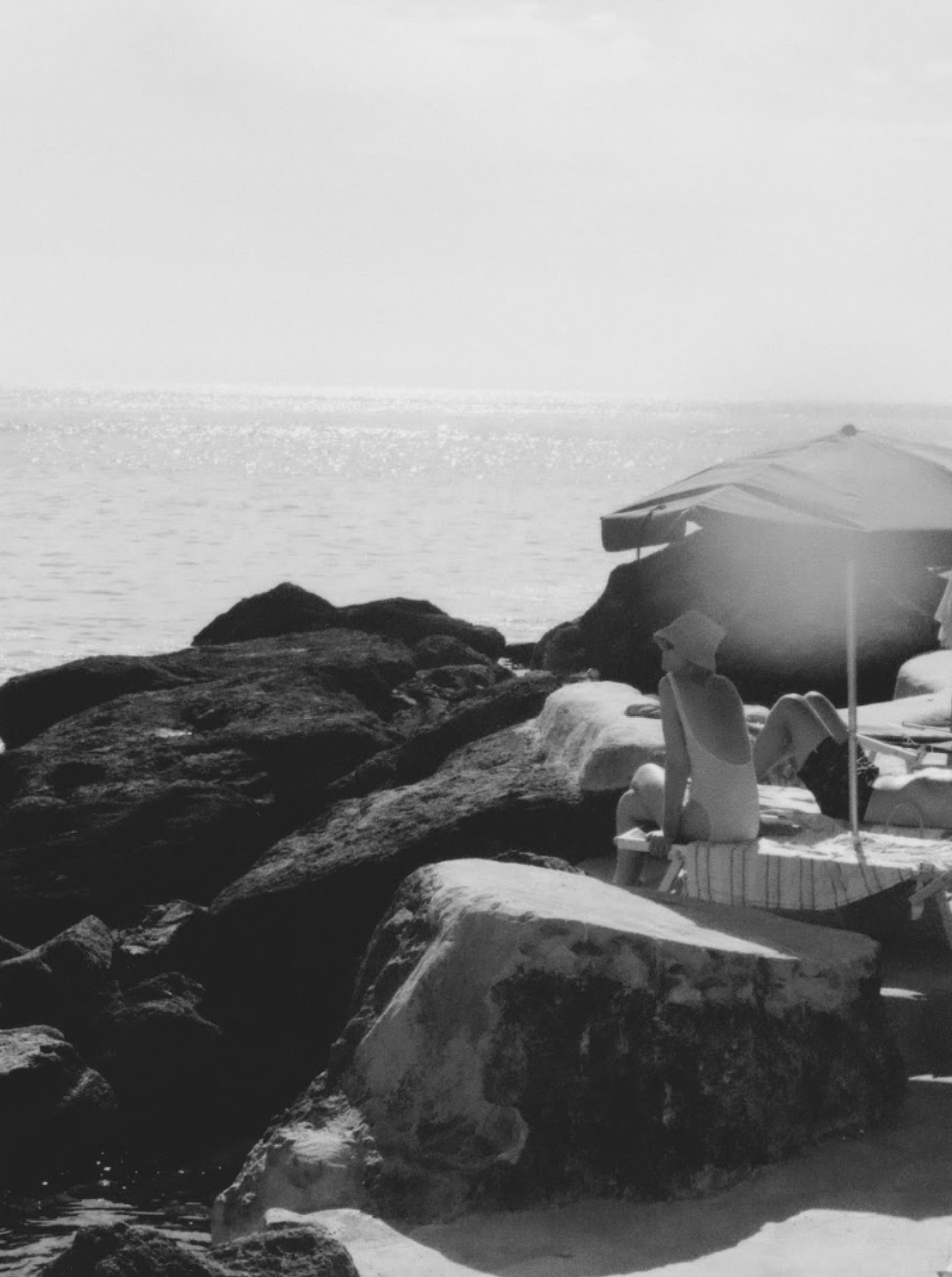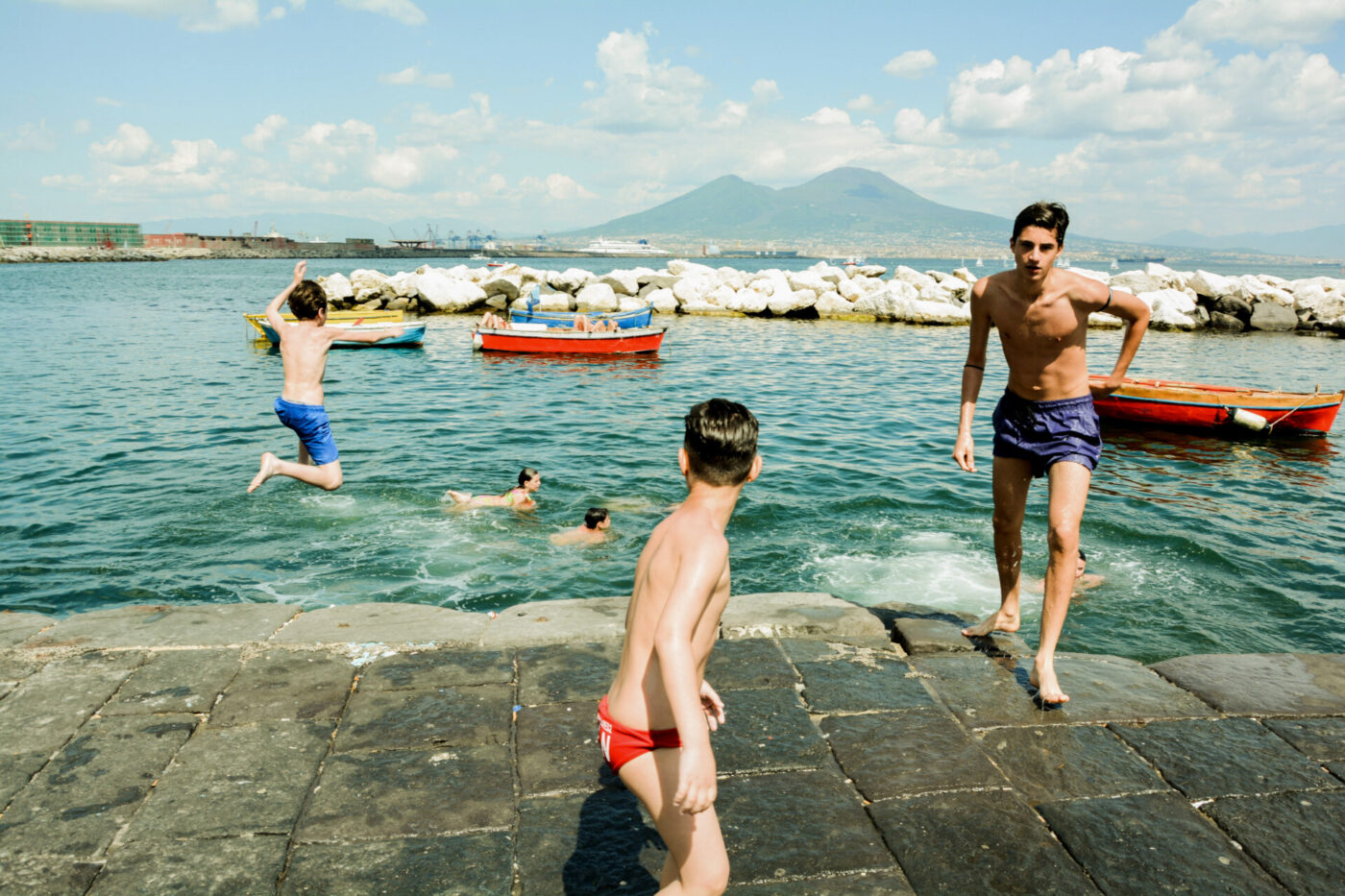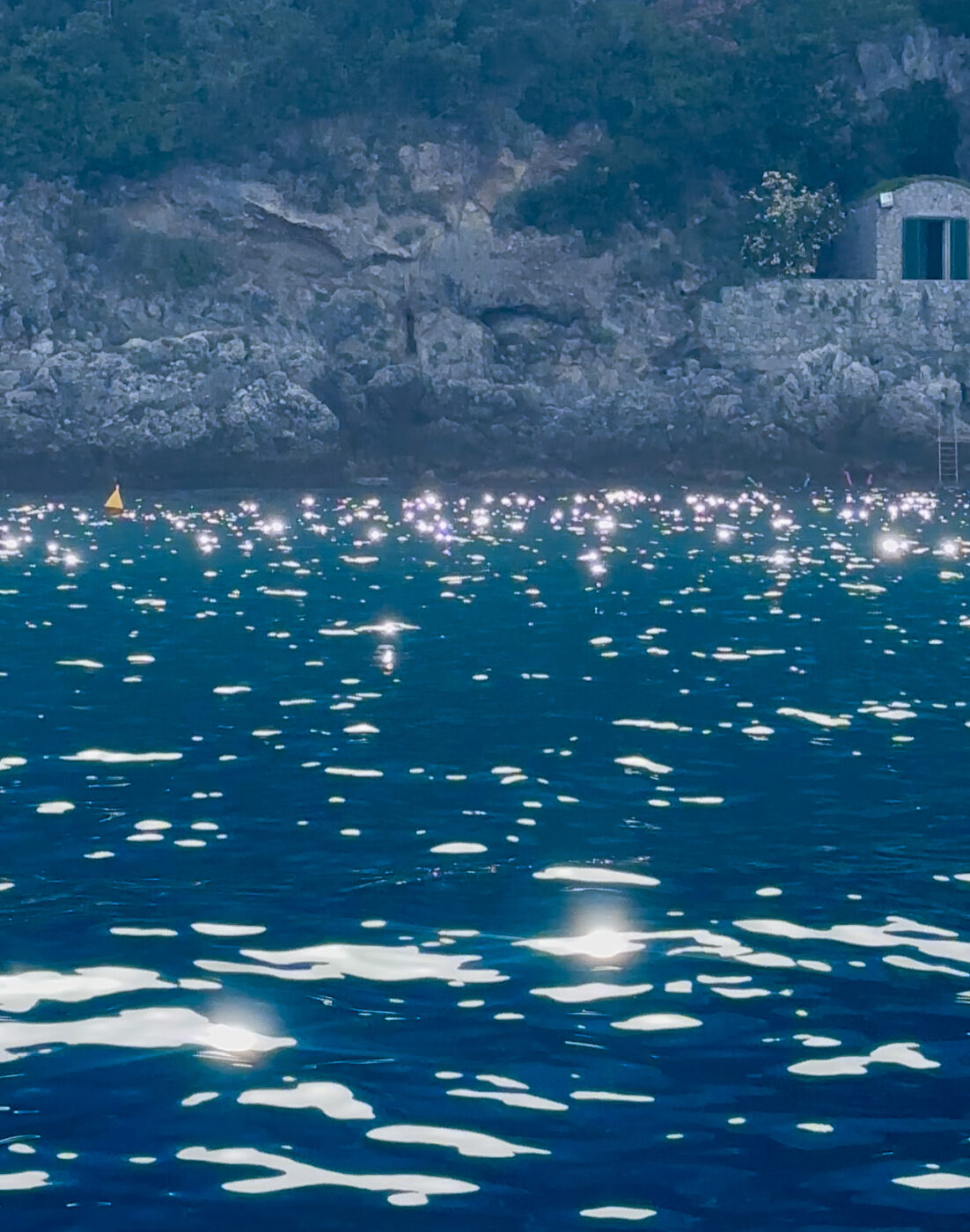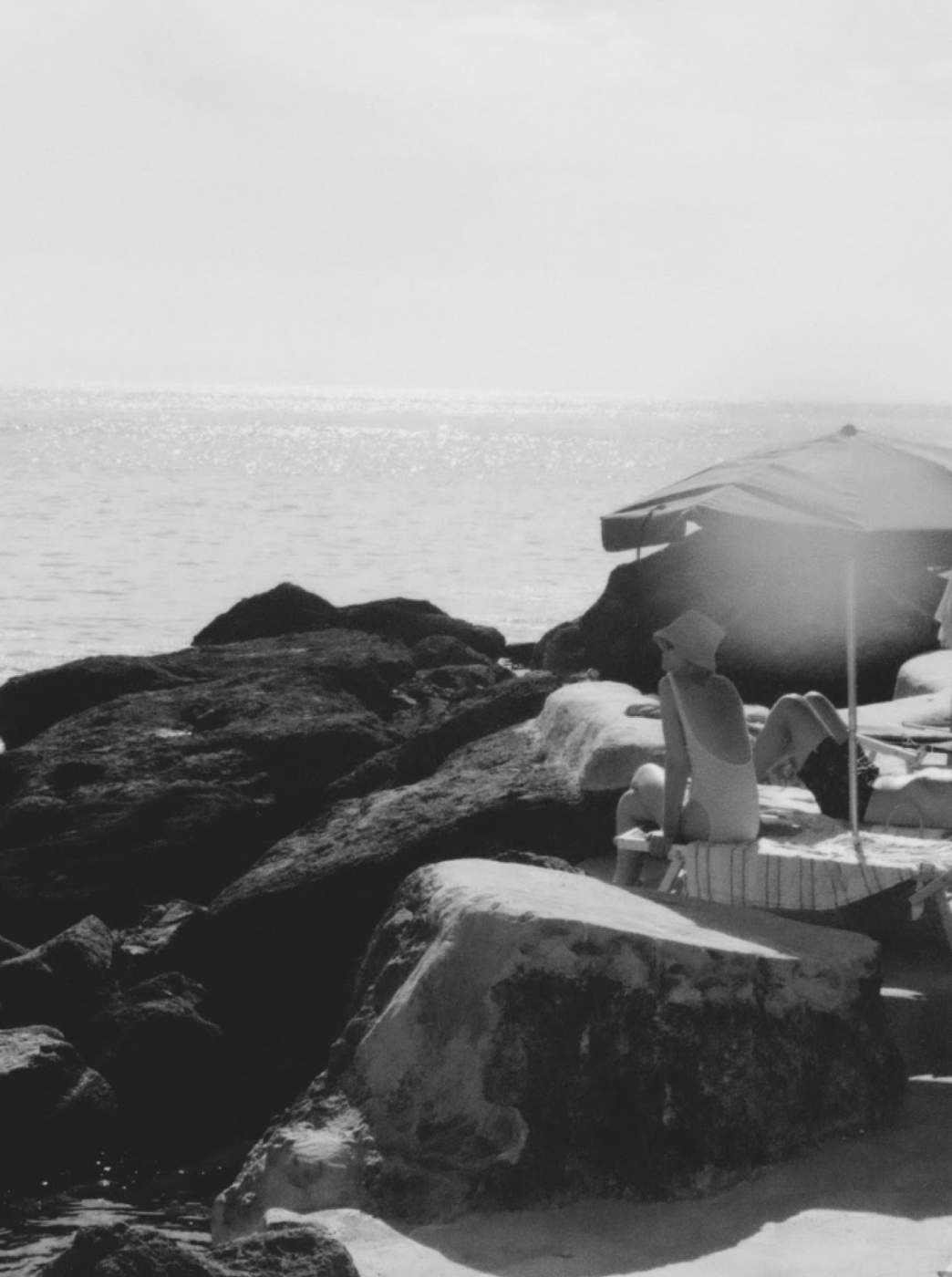Appucundria, appocundria, pucundria. There are many ways of transcribing and pronouncing this Neapolitan word that has no synonyms.
Some will tell you it’s a shade of melancholy or regret; another may define it as despondency or resignation, though stripped of its mournful connotation. Others may point to its assonance with the Greek word “ypochondrios” (meaning “under the ribs”), referring to the precise spot where the pain of deep discouragement and sadness seems to be located. Appucundria, however difficult to explain in words, is all of this: a mix of nostalgic feelings that go beyond the negative to add a sweetness of soul.
The concept is often compared to saudade in Portuguese (or less commonly, in its darkest and most destructive meaning, to the Baudelairian spleen): the two feelings share the same romantic vein, a nostalgia for what we have experienced and lost or, better still, what we don’t have and may never have; the lack of both something we have possessed and something we yearn to possess.
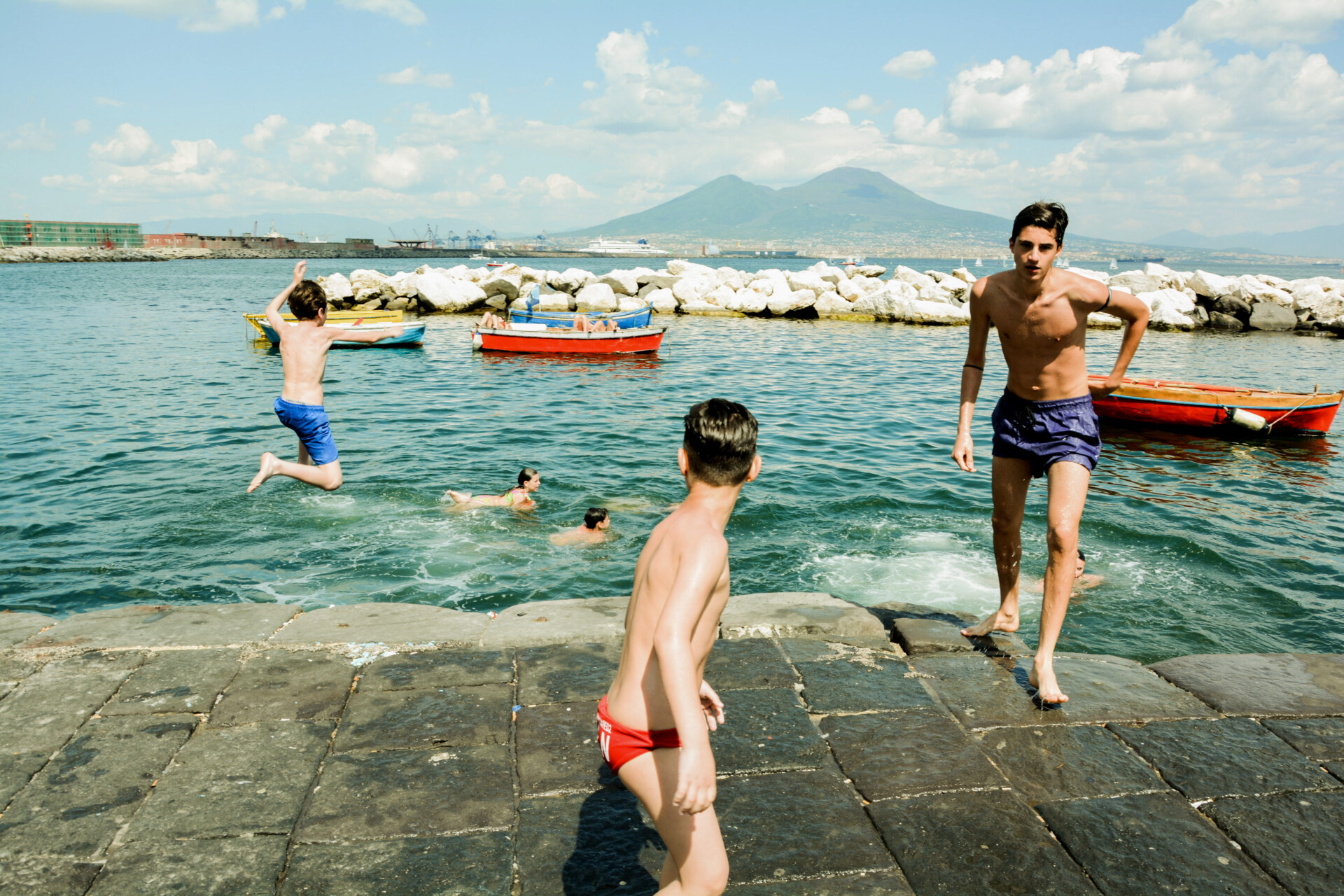
Photography Francesco Freddo
Before arriving in Naples, I didn’t know how to name this feeling. I used to call it by its symptoms–despondency, yearning, desire, regret–but living in the belly of the city allowed me to refine its contours, to define in high resolution what I was feeling. Here, it was possible, not just because dialect can express the chiaroscuro of the soul more precisely, but because, above all, appucundria can be encountered in every corner: an old man playing cards alone, a couple on the seafront cliffs watching the sunset over Capri, the sad smile of a mother waving goodbye to her son on a train slipping away from Stazione Garibaldi, a day at the beach in Posillipo with the awareness that summer is drawing to a close, a moped abandoned in front of a street shrine.
Neapolitan song is full of appucundria too: heartbreaking melodies that touch the most intimate chords and poignant stories of passion and loss, couples separated by fate, and loves that can never be fulfilled–a bit melancholic, a bit tormented. Pino Daniele took a stab at its meaning with the song “Appocundria”, as did the oft-forgotten Fausto Cigliano in “Pucundria”: “Wandering through the alleys with a child’s heart, a tear trembling, thinking of love. And I look at the window. It’s still closed, it’s Maria’s. Who knows, did she get married?” The Neapolitan diagnosis for Cigliano would be “tu suoffre ‘e pucundria” (“you suffer from appucundria”).
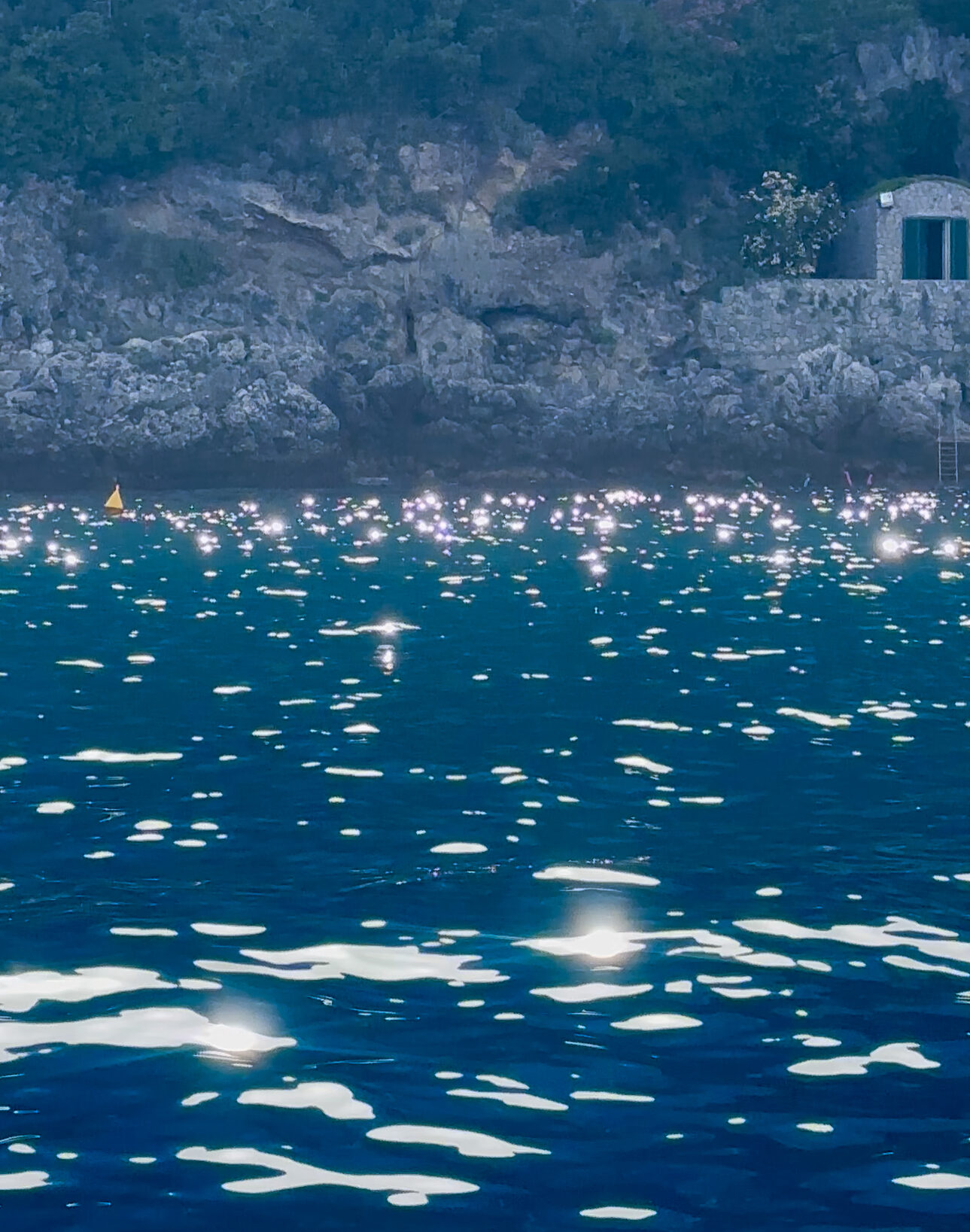
Neapolitan song is full of appucundria too: heartbreaking melodies that touch the most intimate chords and poignant stories of passion and loss, couples separated by fate, and loves that can never be fulfilled–a bit melancholic, a bit tormented. Pino Daniele took a stab at its meaning with the song “Appocundria”, as did the oft-forgotten Fausto Cigliano in “Pucundria”: “Wandering through the alleys with a child’s heart, a tear trembling, thinking of love. And I look at the window. It’s still closed, it’s Maria’s. Who knows, did she get married?” The Neapolitan diagnosis for Cigliano would be “tu suoffre ‘e pucundria” (“you suffer from appucundria”).
To me, appucundria is a shimmering sentiment. Its lighter nuances recall the softness of a sunrise admired from the Belvedere di San Martino, the bluish indolence of a few hours on the Castel dell’Ovo cliffs, the golden reflections of a sunset that already smells of autumn. Its darker nuances, on the other hand, recall a night on the Spiaggia delle Monache counting the stars, the deep ultramarine blue of the Gulf in winter, the smokiness of the endless rain in February.
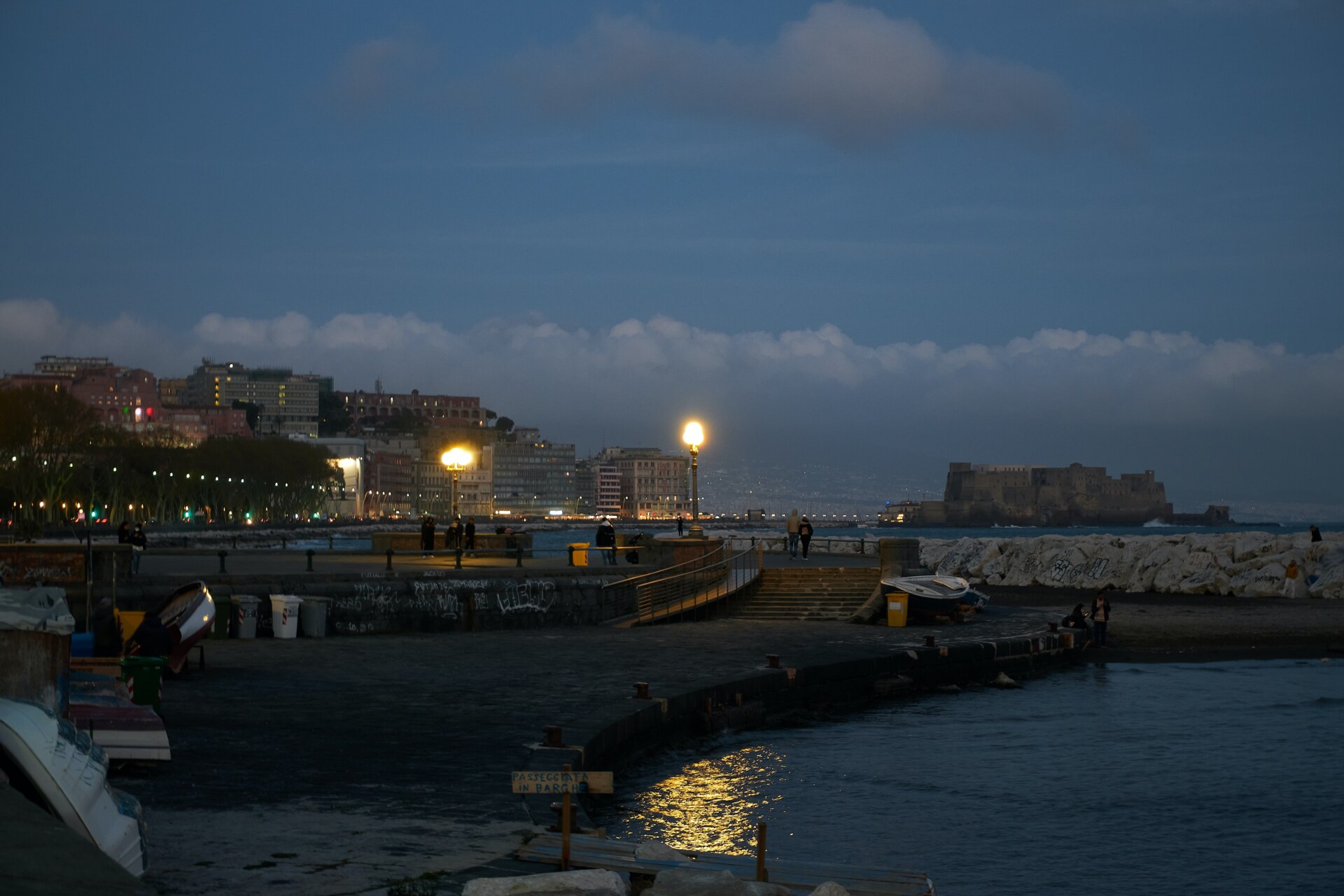
Photography by Roberto Costa
Like ammuina, appucundria is a feeling deeply rooted in the Neapolitan character. Unlike ammuina, appucundria is not immediately visible. I too, upon moving to the city, was initially overwhelmed by far more manifest excesses–the shouting of the greengrocer, the fireworks to celebrate an SSC Napoli victory, the buzzing of mopeds, the confusion of San Gregorio Armeno–but slowly, slowly I realized that something more mysterious and less epidermal was flowing beneath the surface of the city. Next to the scugnizzi diving from the widening of Via Nazario Sauro lingers a girl staring at the horizon, absorbed in her thoughts with wet eyes; in the middle of a street party, amid laughter and songs, a couple quarrels, whispering words of anger and forgiveness; in a street clogged with tourists taking photos of this or that, an old man mumbles with an imaginary friend about the good times lost; at the foot of the Conservatorio di San Pietro a Majella, hordes of teens shatter bottles of beer on the ground while a soprano sings Lina Cavalieri’s “Maria Marì” ignored by all.
When one becomes aware of this visceral layer, there’s no turning back. Appucundria becomes the visible side of the coin. How then to live after the discovery of its existence? In his poem “Fantasia”, Edoardo De Filippo suggests taking life as it comes, letting ourselves be guided by fantasy. My advice instead is to embrace it, to make it one’s own, to understand that, without appucundria, joy would be less sweet and sadness only bitter. I would advise you to pay attention to appucundria, and not just in Naples, because, although it’s an intensely Neapolitan feeling, it has the virtue of stepping out of its boundaries and following us wherever we go.


